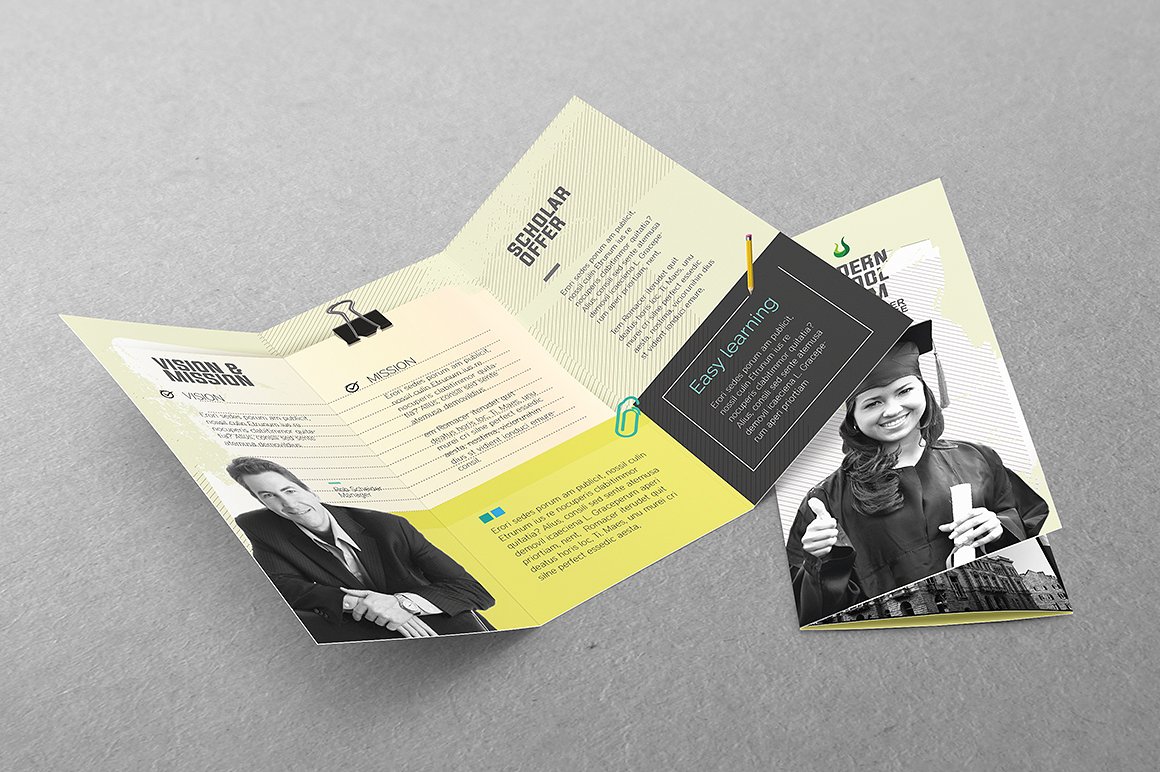17+ Education Trifold Brochure Examples to Download
Advertising in the field of education is tricky business. It can be difficult to convince people, specifically parents and their children, how your programs and services may help them grow and develop as individuals. Given the weight of such decision, you may need to persuade your clients even further with the help of a detailed reading material in the form of an education brochure. Not only will it keep clients thoroughly informed, but it can also motivate them to take action. You may also see Brochure Templates.
Modern Education Tri-Fold Brochure Example
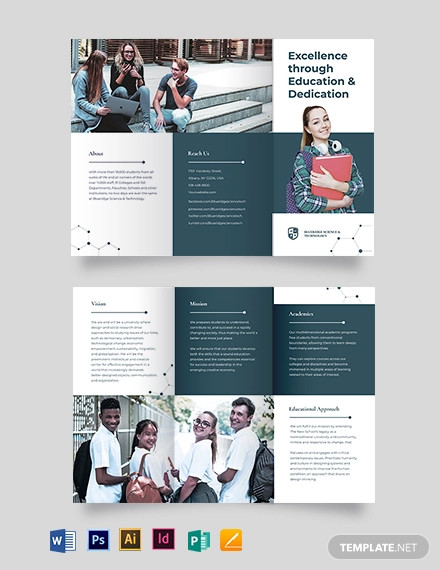
Simple Book Store Tri-Fold Brochure Template
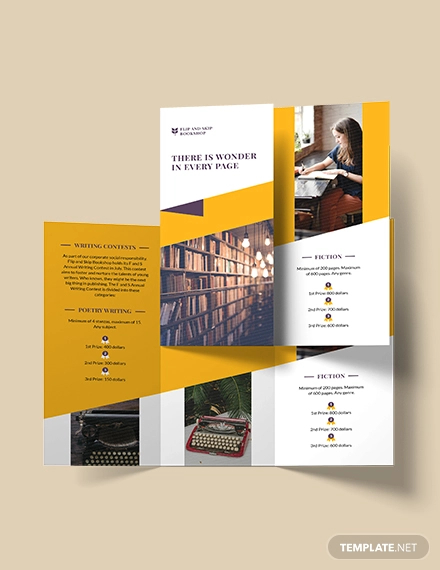
High School Tri-Fold Brochure Template
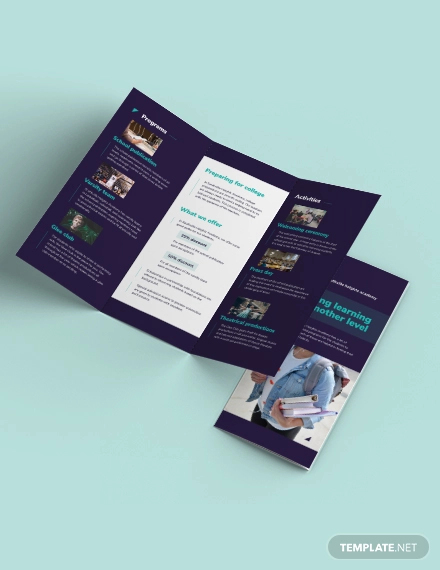
Free Education Trifold Brochure Example
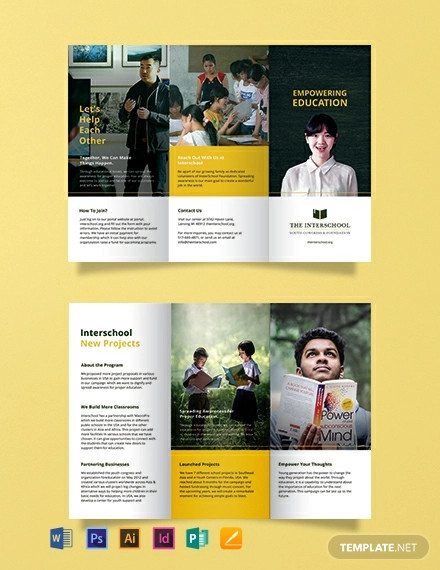
Back to School Trifold Brochure Example
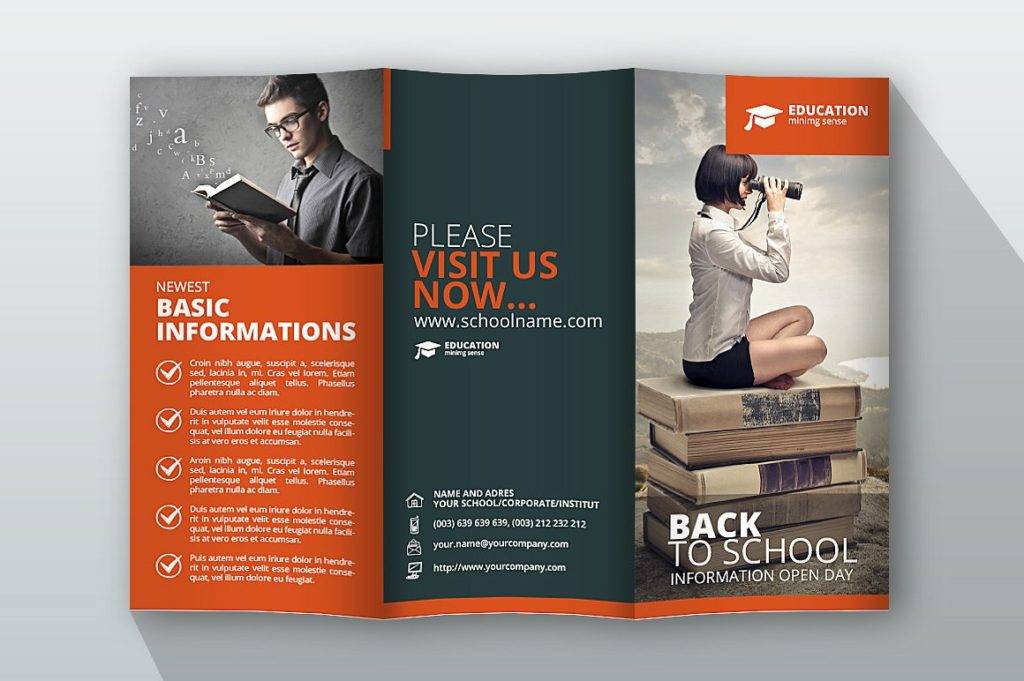
Education Training Trifold Brochure Example

Elementary School Trifold Brochure Example
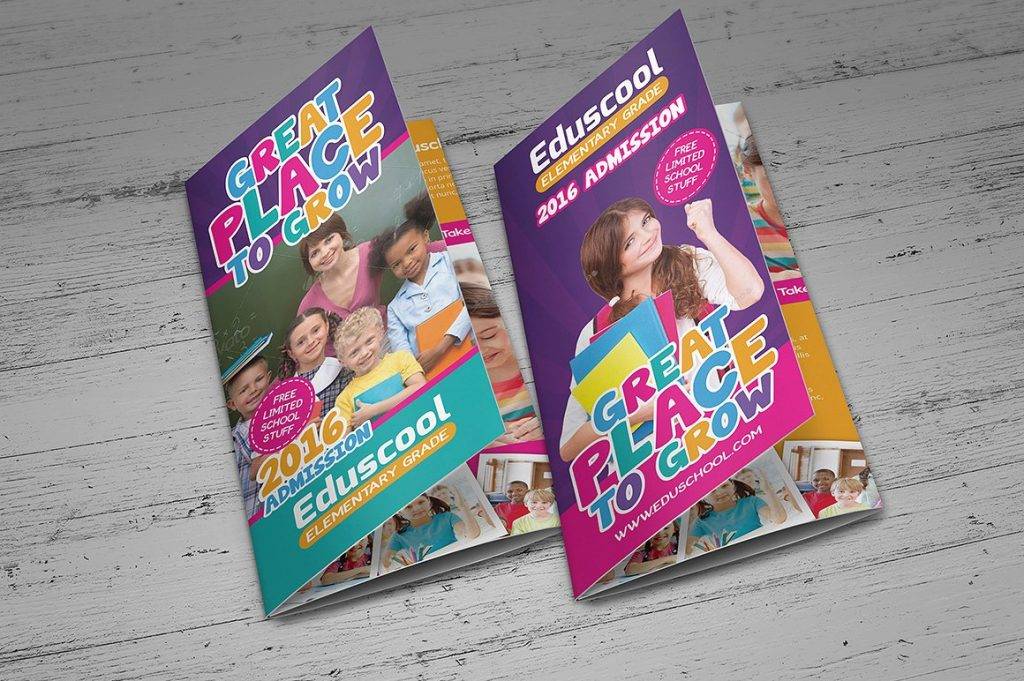
Kids Camp Education Trifold Brochure Example
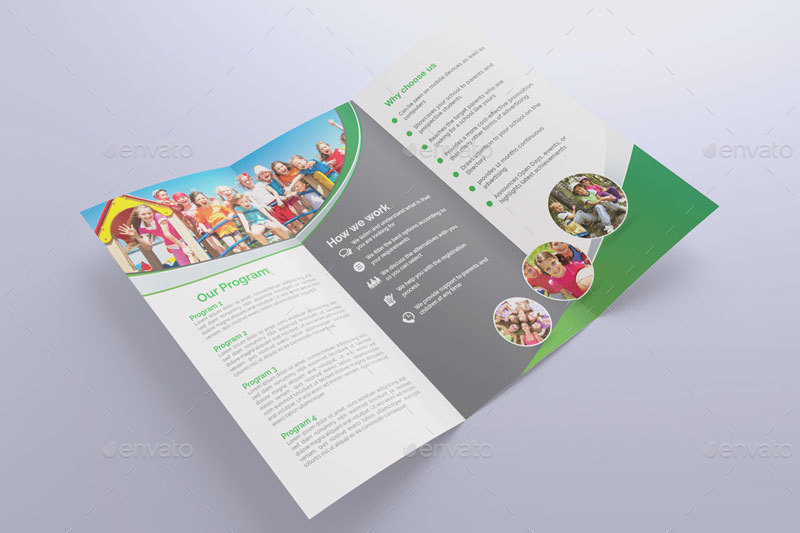
School Trifold Brochure Example

Benefits of Brochures as a Marketing Medium
There are people that advertise with television commercials, radio advertisements, and newspaper ads, but what about those who choose not to take the digital approach due to its costly production? In a technology-driven world, taking the traditional approach would seem like a crazy idea, but you’d be surprised to know how brochures have slowly made its way back to the marketing scene. You may also see advertising brochure examples.
Simple brochures are a conventional promotional medium that have played a significant role in marketing for many years. Besides being tangible in nature, brochures send a subtle message that the business is professional, reliable, and committed to providing quality goods to its customers. If you’re considering brochures to market your company to consumers, you may want to take note of its benefits as well.
1. Easy to Distribute
Relaying information to prospects is incredibly easy with a brochure. You can strategically place your brochures at any given location that is visible to clients or customers. For instance, insurance brochures are typically handed out by salespersons to potential clients at city centers and other public venues. Parents who are interested in enrolling their child in a certain educational program are often given a brochure after making an inquiry as well. Some companies even give away other palpable materials along with the brochure in order to reach out to customers. This includes free caps, t-shirts, bags, or pens.
2. Cost-Effective
Although brochures are relatively more expensive to produce compared to a regular flyer design, there a number of print shops that offer awesome discounts for bulk orders. This way, you can get sleek brochures for a price that fits your marketing budget.
So why invest on a brochure?
Trade shows and conventions often have thousands of participants present at the event. This means you have a lot of people to cater to at the same time. Some of which would start conversations, while others would simply stop to feed their curiosity. Naturally, attending to all these people at once can be a huge challenge for many marketers. But with the help of a brochure, you can let the medium communicate basic information in your behalf. Having a ready-made summary of your products and services in the form of a brochure will save you a lot of time and effort in your promotional venture. You may also see real estate brochure designs & examples.
3. Trust-Worthy
A brochure lets people know that you’re a serious business working to serve the needs of its customers in the best way possible. It’s not just about making a sale, but it also shows your devotion towards bringing quality goods to an audience. When clients realize that you do actually care about the problems and struggles they face on a daily basis, they tend to rely on your company even more.
From your business goals and objectives to your credentials and business practices, providing evidence of your company’s capabilities will help you establish a credible brand in the eyes of consumers.
4. Informative
Unlike a regular TV advertisement, a brochure allows you to relay detailed information to customers in a systematic manner. You can section the brochure into different parts to describe your brand, along with the products and services offered. This makes it easier to convey information within a small area. The manner of which a message is conveyed would depend on the type of brochure you choose. Utilizing this space wisely guarantees your message gets across smoothly and clearly for readers to grasp. You may even make that extra pitch by adding discount coupons and vouchers to the brochure.
5. Customizable
As a client reads through your brochure, you begin to develop this one-on-one connection with them. This gives you the opportunity to communicate your brand message to a reader by telling them why they need your products or services in the first place. This helps personalize your business, giving it a sense of individuality to stand out from the competition. A brochure adds a personal touch to your marketing campaign by communicating who you are and what you are capable of in a simple and approachable manner. It’s fairly easy to customize your brochure, as long as you have a defined purpose in mind.
Junior School Trifold Brochure Example
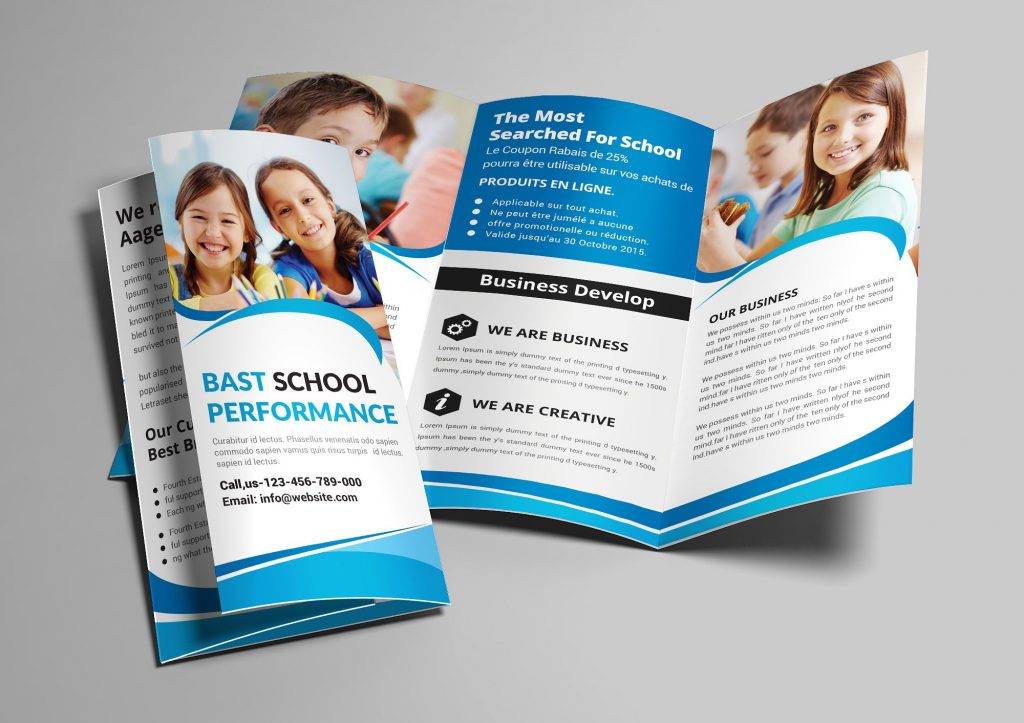
Education Trifold Brochure Example
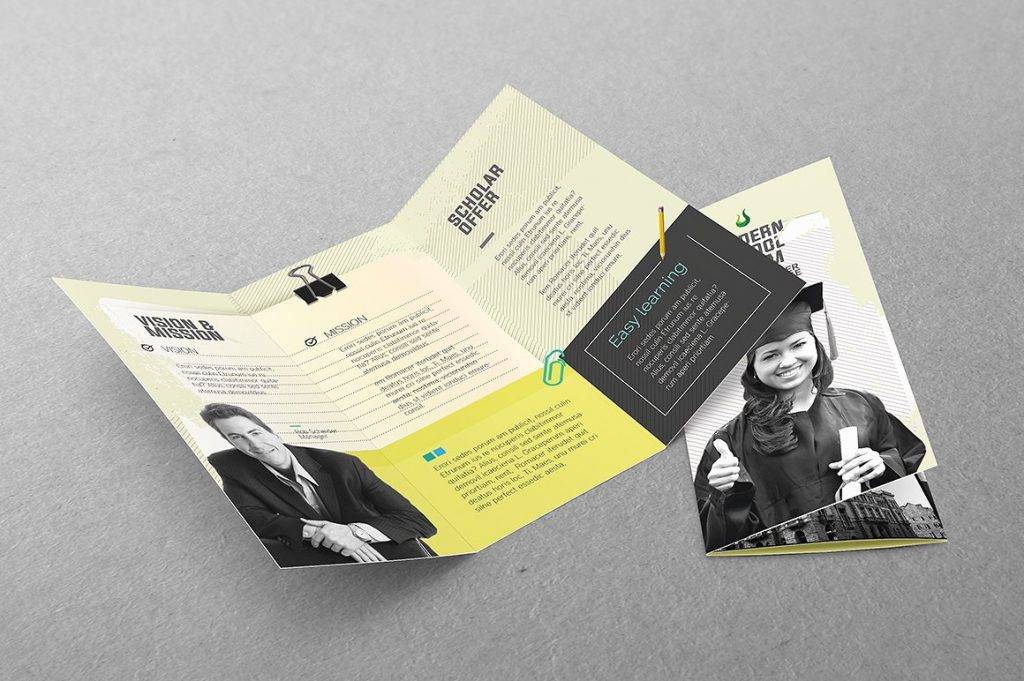
Trifold Education Brochure Example
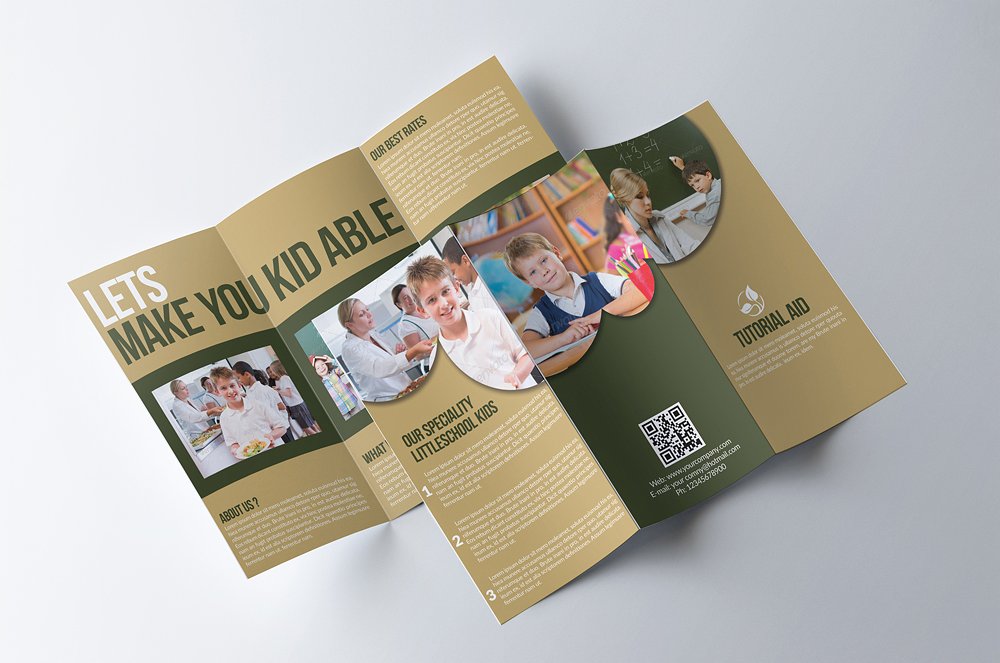
School Trifold Brochure Design Example
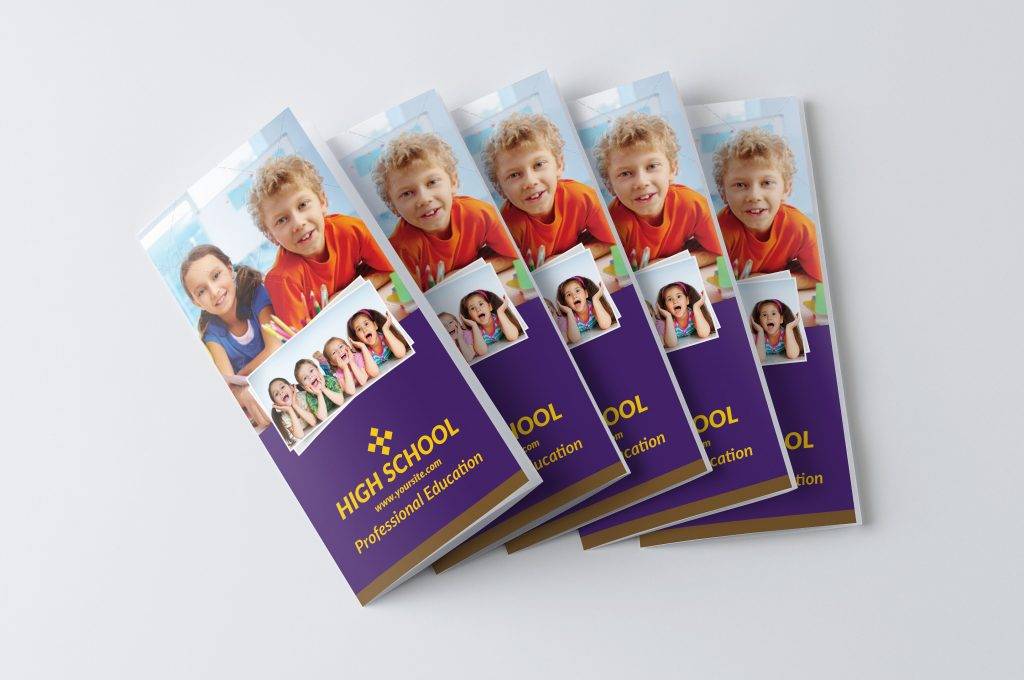
Types of Brochures
Brochures come in a variety of forms, some of which are classified according to its layout or format, as well as how it is intended to be used. Knowing the difference between these types of brochures will help you determine which would suit your purpose best.
1. According to Format and Layout
Brochures are often categorized according to their standard layout, which includes the way they are folded and their overall appearance.
- Gate fold brochure – Though this type of brochure is fairly uncommon due to the way it is structured along with its cost, it can still make a great impact when used correctly. Its high-quality material makes this brochure type durable and appealing, which works well for high-end marketing. The brochure’s inward folding, which is a key feature of the medium, makes it compact and easy to carry around. It also provides ample space for a designer to add business details and images accordingly.
- Tri-fold brochure – From the name itself, a tri-fold brochure consists of three folds that are usually folded towards the middle to create six equal panels. It contains enough space to present information in an organized manner, which is perfect for companies, organizations, and educational institutions looking for a sizable commercial medium. Its low production cost makes it a popular choice for many marketers as well.
- Bi-fold brochure – Deemed to be the most common type of brochure design, bi-fold brochures share similar characteristics to that of a booklet. These brochures are folded in half to form four panels, with a front and back panel, as well as two internal panels that make it easy for a reader to scan through each page. This is ideal for companies that seek for more advertising space to promote their goods.
- Folders and inserts brochure – Think of it as a brochure within a brochure. This type of promotional material is great for storing more than just the brochure, but a feedback form, a suggestion form, or an enrollment form as well. Marketers that want to conduct on-the-spot registrations and surveys may find this brochure type extremely useful. You may also see examples of business brochure design.
- Z-fold brochure – Similar to a tri-fold brochure, this type of brochure consists of three folds, the only difference is that the material is folded into a z-shaped pattern. This allows companies to present their selling propositions in a well-detailed manner within the three panels of each side. You may also like examples of company brochure.
2. According to Use
Apart from its format, a brochure may also be classified as per its intended use. These are as follows:
- Response brochure – This brochure is used to respond to customer inquiries and other potential leads. Those who want to know more about your offers may want additional information to support their buying decision. So instead of simply attracting customers, the aim of a response brochure is to close a sale. You may also check out travel brochure designs & examples.
- Check out brochure – These are the type of brochures you find at check out counters. When people line up to pay for their items, they can pick up these brochures and learn more about a given product or service featured. The key is to prompt a reaction by making an eye-catching cover to ensure that a person notices it. This can help a business turn a first-time customer into a regular one. You might be interested in examples of education brochure design.
- Direct mail brochure – Like email marketing, direct mail brochures are sent to customers to feature a company through a sample brochure and a marketing letter. This is designed to encourage prospects to read what the brochure has to offer, like product information and company abilities.
Colorful Education Trifold Brochure Example
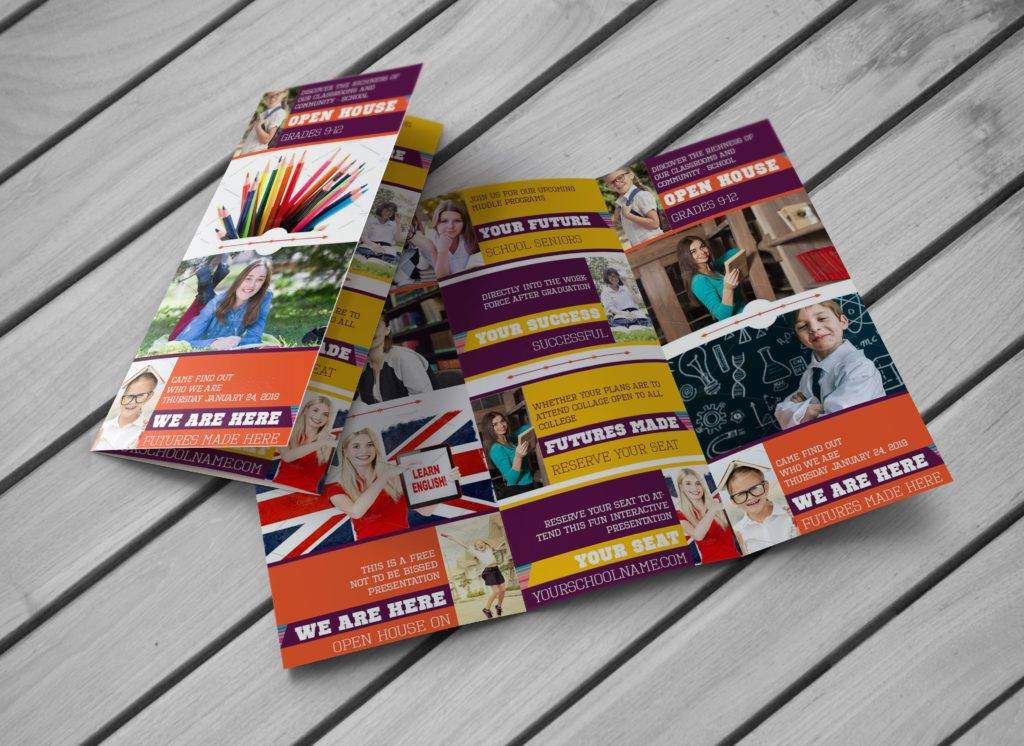
Business Education Trifold Brochure Example
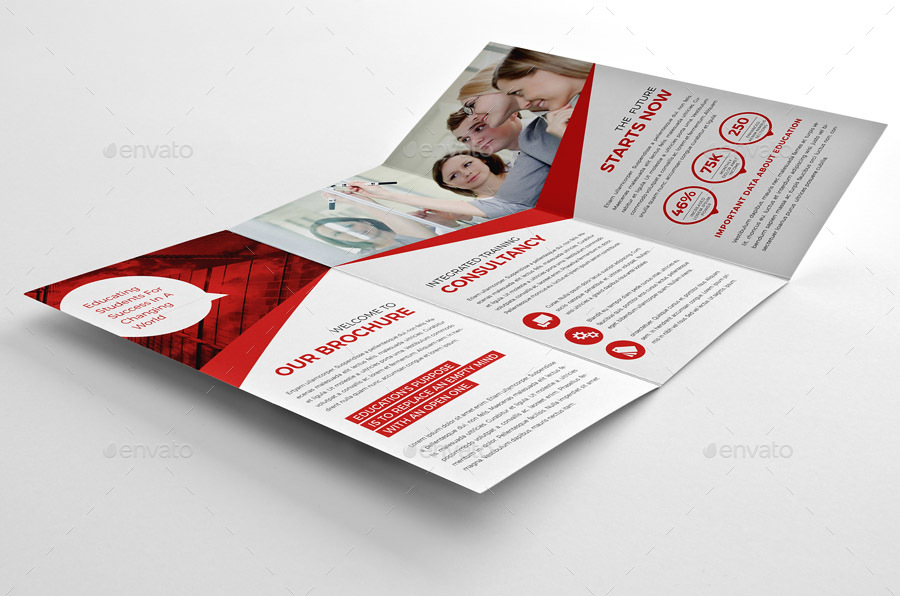
Kids School Trifold Brochure Example
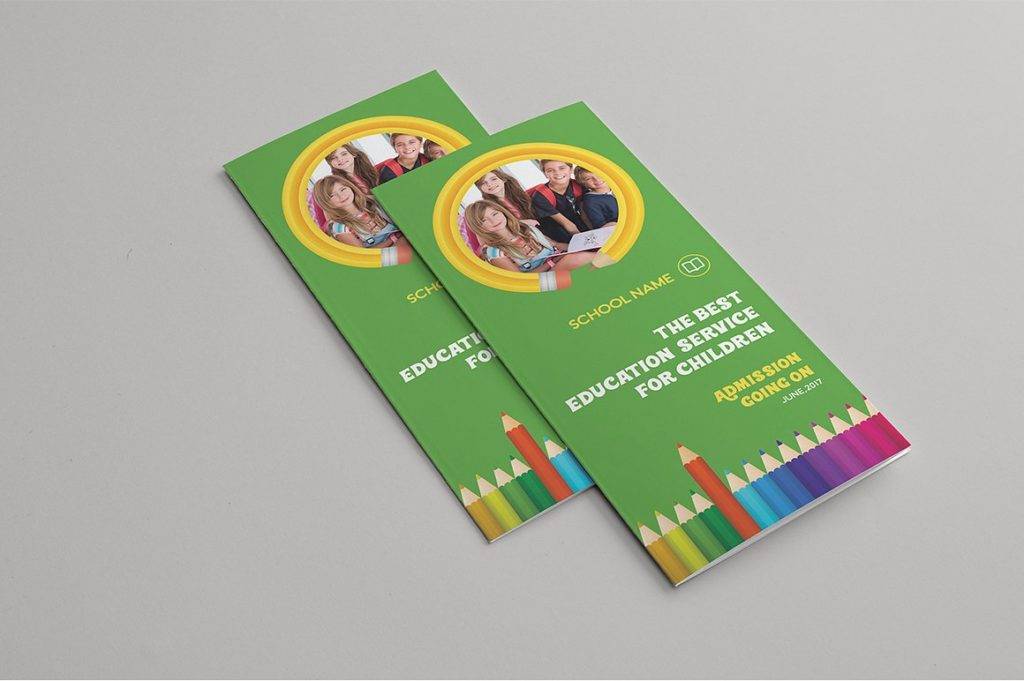
Trifold Brochure for School Example
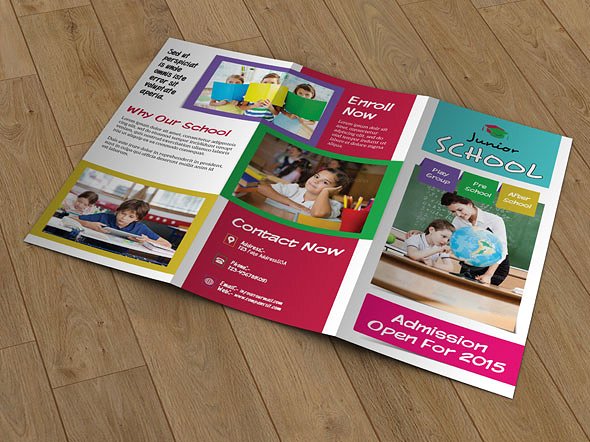
Trifold Back to School Brochure Example
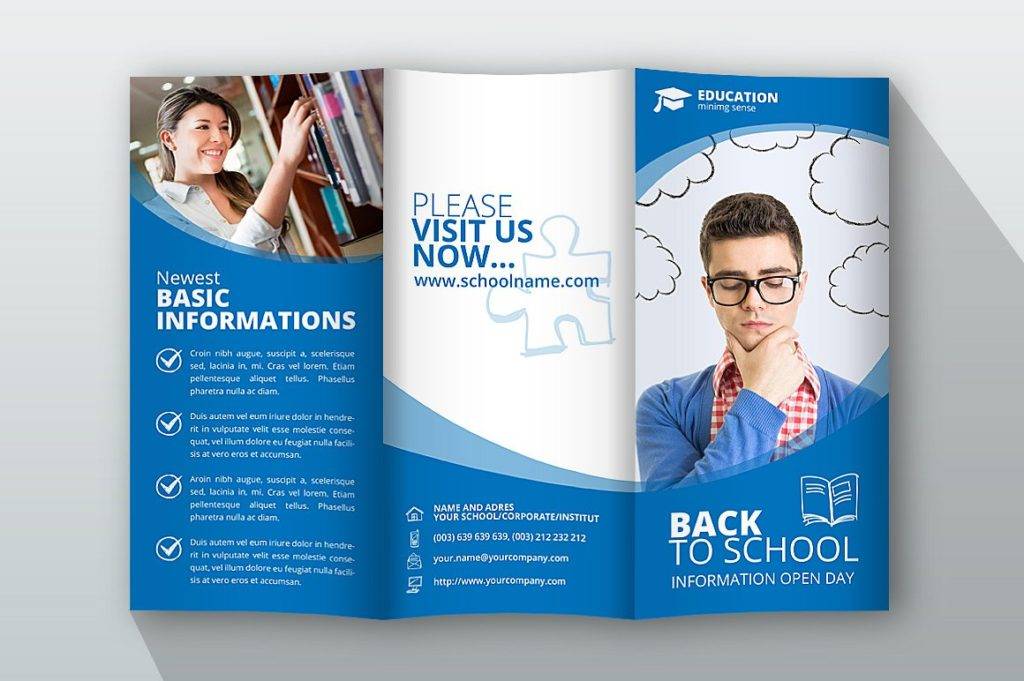
Tips for Designing an Effective Brochure
A powerful brochure has the ability to attract, educate, and impress its readers. This can help a company build authority and develop credibility to widen its reach and persuade customers to take immediate action. Due to these factors, the process of crafting a brochure can be a challenge for many designers. You may also see differences between a brochure and a pamphlet.
1. Know Your Brand Personality
Your brand’s distinctive personality is something that must be magnified across every marketing platform used. If you don’t know your brand inside and out, how do you expect your target consumers to recognize who you are?
Once you have defined your brand personality, translate this into your brochure design. You must have an in-depth understanding of your brand’s identity, personal branding, and corporate brand as a whole. This can shape one’s perception towards your company, allowing you to deliver your brand message accordingly. You may also like event brochure designs & examples.
Differences between a Brochure and a Pamphlet2. Define Your Objectives
What is your primary aim with the brochure? Perhaps the business brochure will be used to respond to inquiries? Or is it a sales promotion brochure that will be used to complement a salesperson’s pitch? Whatever your marketing goal is, be sure to have this reflected in your brochure design. Consider how this is going to be delivered or displayed, as this will help you determine the final layout and content of the brochure as well.
3. Identify Your Customers
Though its always good to reach out to a broad group of people, having a targeted audience will help you determine what the majority of your customers are looking for. For example, if your demographic includes teenagers and young adults, then you must tailor the brochure according to their interests. Pinpointing the needs and wants of your target consumers will allow you to connect with these individuals a lot better. You may also see indesign brochure examples.
Take the time to interact with your customers. You can conduct survey questionnaires to find out more about your prospects on a personal level. You can then use these responses to map out the best brochure design to bridge their wants with your offers.
4. Develop a Message
Beyond the colors and patterns of your brochure design comes the most important element of them all: the message.
A strong message is vital in any given marketing medium. It must speak to your readers in a way that is clear and convincing. Let’s say you’re designing a brochure for a children’s summer camp. Having a message that says: “Come join us this summer!” while using a tone that is warm and friendly will entice more prospects. Keep in mind that this message must reflect the kind of audience you serve; otherwise, it would be difficult for clients and customers to take you seriously. You may also like examples of service brochures.
5. Be Unique
Creativity is always important in the world of advertising. This attribute will set you apart from competitors of the same industry. But this goes beyond just making a colorful and vibrant promotional tool, as it’s also about creating something original and unique to your brand’s identity. You must ensure that the design stands out from a rack of brochures, while successfully delivering your brand message. You may also like fitness brochure designs & examples.
Begin by brainstorming various ideas that are in line with your company’s overall business strategy. Once this is done, you can then apply the concept that best describes your brand to the brochure design.
6. Avoid Big Words
While you may think using technical terms and fuzzy words will make you appear credible in the eyes of customers, you may have to think twice about it.
Truth is, complexity will only cause confusion and miscommunication. It only makes it harder for readers to understand the point you are trying to convey due to terms that possess more than one meaning. So instead, use simple language that is easy to comprehend by the average person. Take note that good wording won’t help you make a sale, but a clear and smooth delivery will. You may also check out sales promotion brochures.
7. Have a Call-to-Action
Without a call-to-action, it would be difficult for people to recognize the purpose of the brochure. An attractive design alone would not be enough to keep your audience engaged. Because of this, it’s still imperative that you encourage customers to react correspondingly to what you’re offering with a good call-to-action. You may also see a4 brochure designs and examples.
8. Choose the Right Design Elements
Never assume that your design is nothing more than a mere decoration. Bear in mind that people respond to colors and text in different ways. These elements can greatly affect the tone and mood of the said medium. To reinforce your brand personality to consumers, consider using your signature font type and trademark colors. You must also find the right balance between each element to ensure the text, images, and background complement one another. This guarantees your message stays visible and readable at first glance. You may also like examples of modern brochure design.
The secret to an effective brochure marketing campaign is to create a promotional medium that is informative just as it is attractive. Visual storytelling must be observed in order for the brochure to communicate your brand message. It should be noted that the quality of your content, images, and design will determine its effectiveness. So whether you’re creating a restaurant brochure, a festival brochure, or an education brochure, always remember to focus on making a brochure that speaks directly to its audience.


